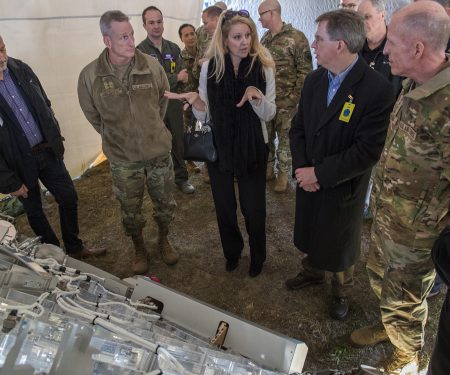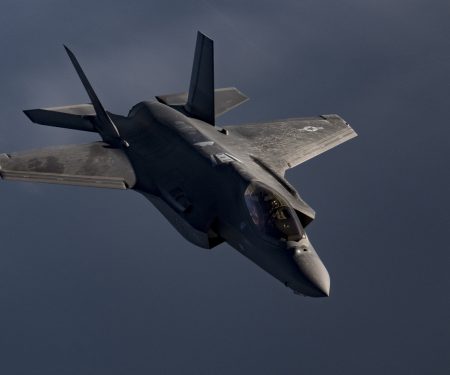Radar Sweep
Al-Qaida in Yemen Claims Deadly Florida Naval Base Shooting
Al-Qaida’s branch in Yemen claimed responsibility on Feb. 2 for last year’s deadly shooting at the Naval Air Station Pensacola, Fla., by an aviation student from Saudi Arabia. Al-Qaida in the Arabian Peninsula, or AQAP, released a video claiming the attack.
Military’s Top AI Officer Retiring as Pentagon Continues to Increase Investments and Interest
The leader of the Defense Department’s hub for integrating artificial intelligence into operations and functional purposes of the military will retire this summer. Joint Artificial Intelligence Center Director Lieutenant Gen. John Shanahan will leave the Air Force, but continue his duties until he transitions from the service, JAIC spokesman Lieutenant Cmdr. Arlo Abrahamson told Federal News Network in a statement.
DOD’s Top IT Official Talks AI, JEDI, and How to Win Over the Commercial Tech Community
Defense Department Chief Information Officer Dana Deasy spoke recently with Jill Aitoro, executive editor of C4ISRNET and its sister brand Defense News, about the tech priorities for the department—and how that Amazon protest of the department’s enterprise cloud contract award impacts his plans.
Deputy VA Secretary Fired after Less than 5 Months on the Job
Veterans Affairs Secretary Robert Wilkie on Feb. 3 announced the abrupt firing of his No. 2 at the Veterans Affairs Department, James Byrne, after less than five months formally on the job. “Today, I dismissed VA Deputy Secretary James Byrne due to loss of confidence in Mr. Byrne’s ability to carry out his duties,” Wilkie said in a brief, cryptic statement posted on the VA’s website.
AFMC, ACC Expand Weapons System Collaboration
The agreement creates a new culture paradigm for the acquisition and operational communities, focused on improved communication and continuous collaboration. It also establishes a framework for bilateral immersions of Airmen to create better understanding of the maintenance and operational requirements of a weapons system throughout its life cycle.
The Pentagon Is Spending Millions on Hunter Drones with Nets
After an F-22 Raptor nearly collided with a cheap drone in 2017, the U.S. Air Force’s Air Combat Command received permission to shoot down unmanned flying objects that get too near its airbases. But shooting down drones over cities is a less-than-ideal solution to a growing problem. So the U.S. military is trying a new tack: spending millions of dollars on defensive drones armed with nets.
A Russian "Inspector" Spacecraft Now Appears to Be Shadowing an American Spy Satellite
Publicly available data suggests that a Russian inspector satellite has shifted its position in orbit to bring it relatively close to a U.S. KH-11 spy satellite. Russia has a number of what it calls "space apparatus inspectors" in orbit, which the U.S. government and others warn the Kremlin could use to gather intelligence on other satellites or function as "killer satellites," using various means to damage, disable, or destroy those targets.
Esper Says Overturning Landmine Ban will Protect U.S. Forces
The Trump administration's decision to lift a ban on using anti-personnel landmines outside the Korean Peninsula will protect U.S. forces, according to Defense Secretary Mark Esper. "Ultimately, they serve as a force multiplier, helping U.S. forces to fight effectively against enemy threats, which may be numerically superior or capable of exploiting operational or tactical advantages over U.S. forces," he wrote in a Pentagon memo issued Jan. 31.
The Defense Department Wants to Use the Atmosphere as a Sensor
The atmosphere is critical to life on the planet Earth, encompassing the air we breathe, blocking out life-threatening ultraviolet radiation from the sun and providing a barrier against the harshness of outer space. Now, the Pentagon’s research arm aims to explore another use for the atmosphere: Its viability to act as a sensor that can pinpoint potential disruptions to the planet.




